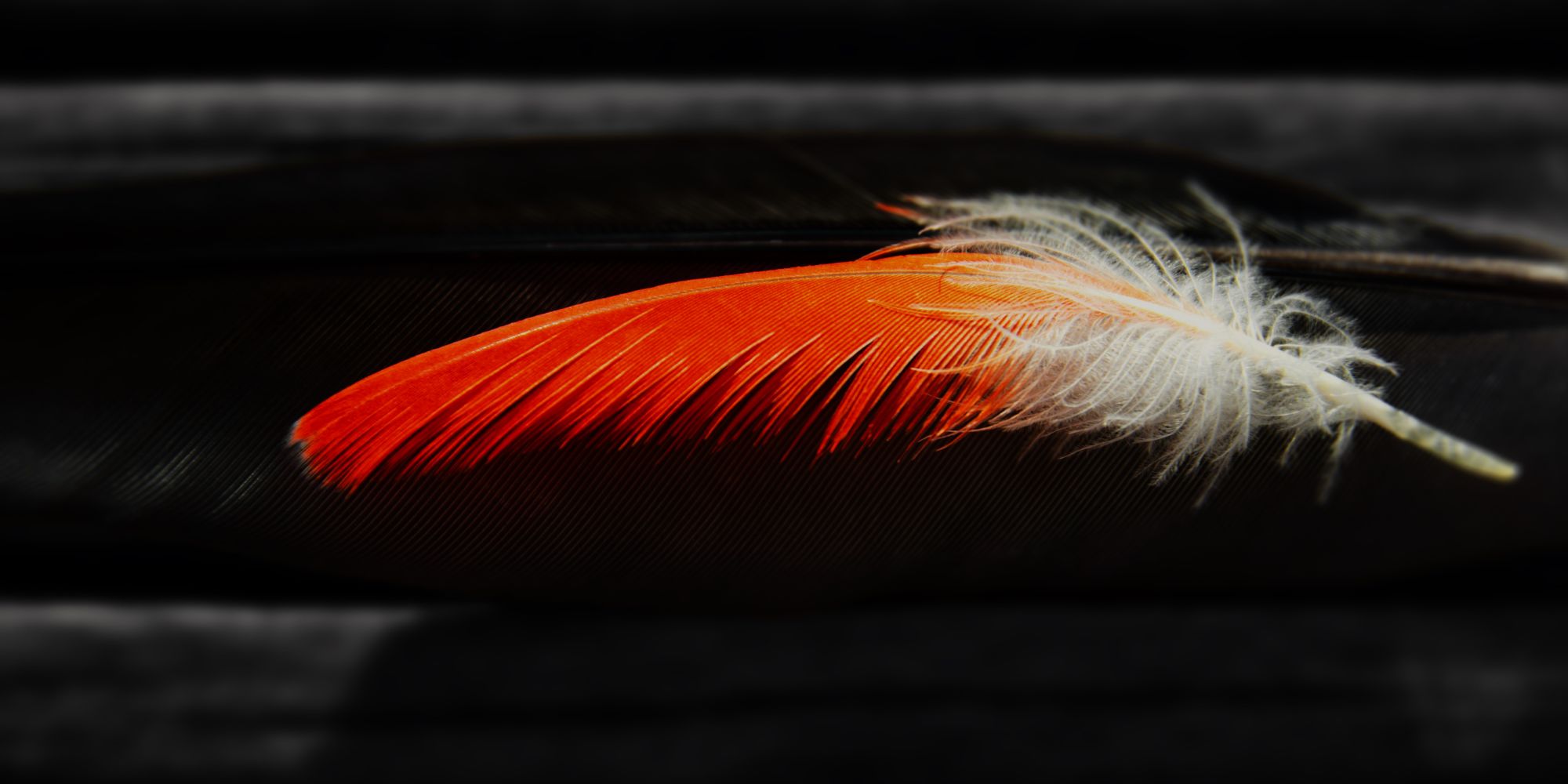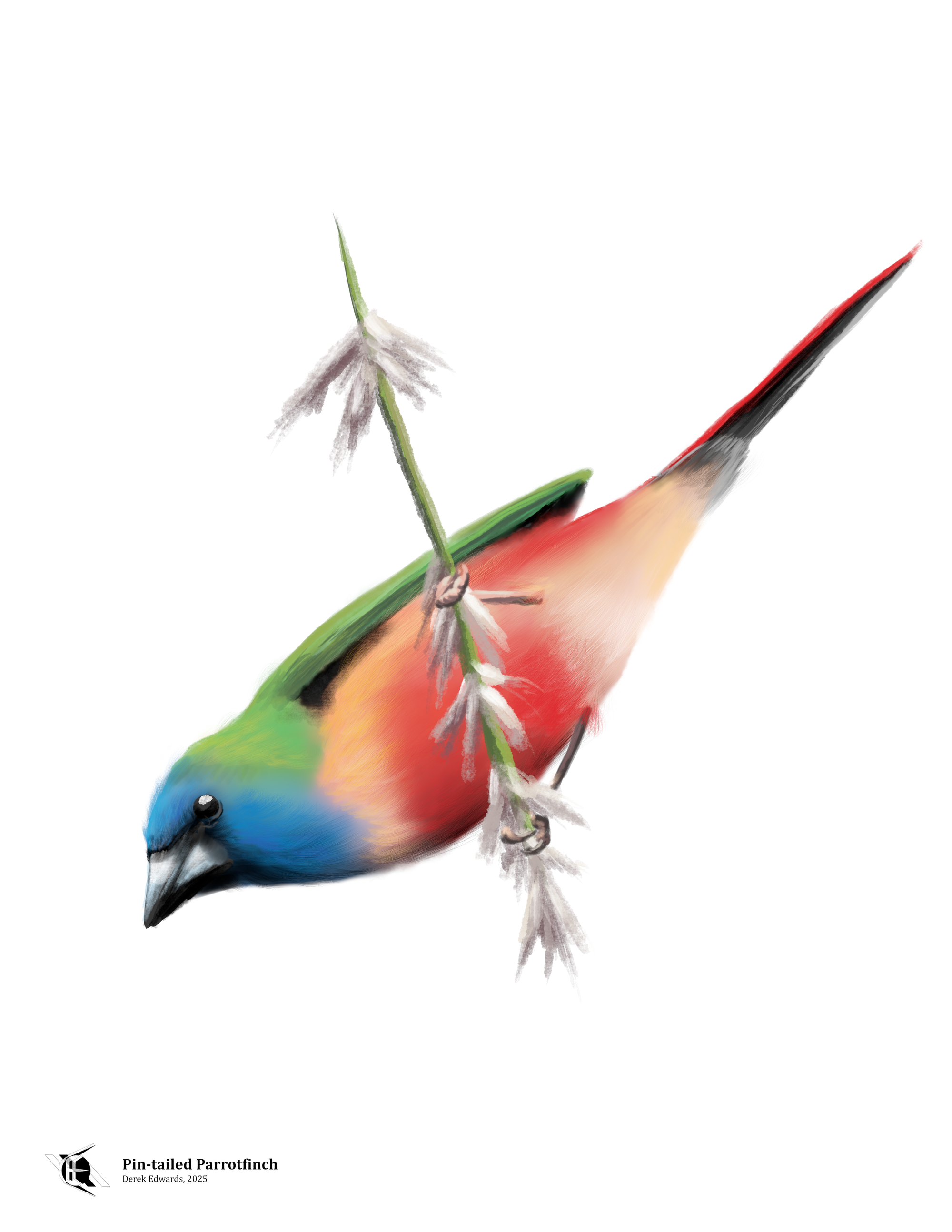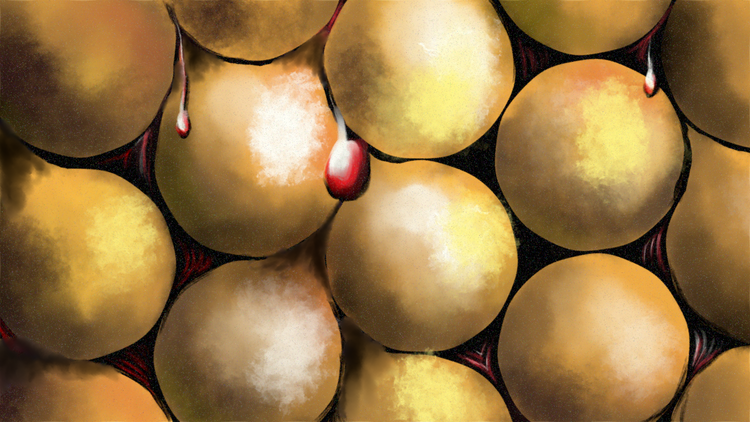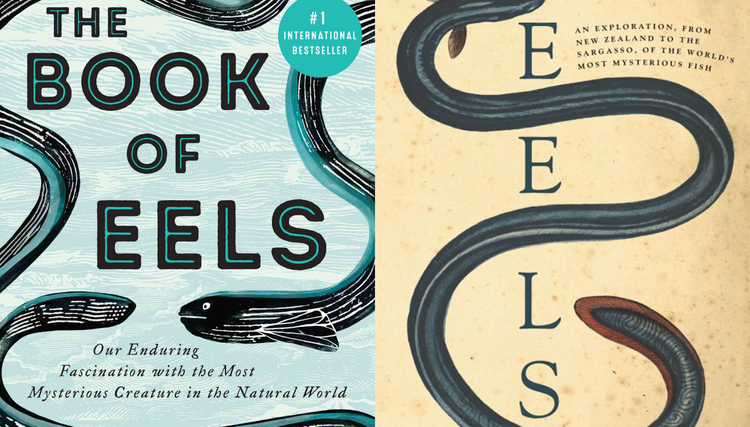
Running Commentary 8/4/2025
Hello,
Just a heads-up: Ghost (the website-building system that The Edwards Edition runs on) has updated to a new major version today. I’m pretty sure this site should all be working fine, but if you find something bugging out go ahead and let me know; there’s a Contact link at the bottom of every page.
Anyway...
Watching...
BattleBots
- MALICE v LUCKY– Lucky showed up to participate, but I must say I was pretty disappointed in how cautious they were about taking any damage across their first two fights. I don't think I've seen a bot retreat as much during a fight as Lucky did against Malice. Their added armor kept them from getting knocked out, but the way they were driven made this loss seem almost like a forfeit.
- JACKPOT v DISARRAY – Disarray is new to television but has been a competitor in the BattleBots live shows for a while, and this fight against Jackpot is actually a rematch. I don't think Disarray did poorly here; Jackpot's minibot kept them pretty tripped up and allowed Jackpot to outflank.
- JACKPOT & LUCKY– Lucky was more aggressive here than against Malice but still seemed to be focused mainly on evasion. They fared much worse against Jackpot’s diamond blade than against Malice’s “Slamethyst.”
- MALICE v DISARRAY – This was a genuinely painful fight to sit through, as both bots struggled to move into engagement with each other after the initial hits took out weapons on both. Malice got the win by a cleaner route. More interestingly, after the fact, Malice disclosed they'd been sent parts by someone who made this “Big Red” weapon, which broke due to being cast aluminum rather than forged and milled alloy. I'm rather shocked to see that; having known and worked with machinists this kind of thing seems pretty reputation-destroying. As they said, better to find out now than in the tournament. Maybe a thorough check of third-party produced parts to confirm proper material would be in order.
- LUCKY v DISARRAY – Lucky at least took one win in the event. With it being their last fight, I think Lucky was more willing to go for it and not worry about repairs afterward. Disarray got flipped a few times, but was always able to self-right to their credit.
- JACKPOT v MALICE – The final fight started out strong and exciting, although it ended a bit pitifully for Malice. Enough forks get caught in the kill saw slots that I wonder why more aren’t made with little flanges to keep them too wide to fall in. Anyway, a well-deserved Giant Washer goes to an undefeated Jackpot.
Reading...

The Martian Chronicles by Ray Bradbury
2025 marks the 75th Anniversary of The Martian Chronicles, Ray Bradbury’s story cycle telling of an American colonization of Mars. The anniversary prompted me to actually read the book recently. Here are my notes:
- The Martian Chronicles is comprised of a series of short stories, distinct from one another but interconnected and best read in order. Bradbury was not one of the classic hard sci-fi writers; he wasn’t a scientist and the science in his works is pretty fanciful and vague, as is particularly apparent here. What his focus was one, and what he excelled at, is character work and cultural commentary. In his story of Americans colonizing Mars he’s both speculating how such an endeavor might go and alluding to how Europe colonized America, and the individual stories making up the cycle each also allude to something about the world Bradbury lived in.
- It’s striking how little Bradbury imagined American life changing in the 50-some years between when he wrote these stories and when he set them. This is especially true in “Way In the Middle of the Air”, nominally set in 2003 but also very much in the Jim Crow South as it was in the 1940s. One can’t really blame Bradbury for this; the latter half of the 20th Century was indeed a time of big changes in the world and, at any rate, Bradbury was commenting on his own world moreso than earnestly trying to anticipate the future. Similarly, his early Mars-bound astronauts are military men, not scientists, and none of them are women, which would be anachronistic even in stories set in the ‘80s. Generally it’s best to imagine these stories as being set in post-WWII America and on a completely made-up planet, rather than trying to square them as being in post-Y2K America and on Mars, neither of which is at all correctly depicted.
- “Usher II” shows one change Bradbury did imagine occurring in the future: in a least some parts of the world, fiction is banned, having died a death of a thousand cuts by various special interest groups worried that stories might offend, disturb, or inspire antisocial acts in people, as well as by scientific sorts who want people focused on reality. Bradbury would run with this sort of story in Fahrenheit 451.
- The initial wave of colonization collapses when atomic war breaks out on Earth and the colonists, still more attached to Earth than to Mars, return to help. We get some stories about the few left on Mars; “The Long Years” is much the better of these, although it’s not among the best of the cycle; “The Watchers” has maybe something interesting to it pushing back on the idea that people will always prefer company to solitude, but I found it mostly mean-spirited comedy.
- “There Will Come Soft Rains” I’d read before, as a high school literature assignment meant to depict apocalyptic anxieties in the atomic age. Of all the stories here this one works most independent of the others and is generally regarded as the best in the cycle; I’ll agree with this appraisal. Bradbury’s depiction of the fire as like a living thing attacking the house, whose automations make it literally like a living thing, is what puts it over the top of the others for me.
- The final story, “The Million-Year Picnic”, sees humankind return to Mars, this time hoping to leave Earth behind altogether. A main theme of the book thusfar had been the colonists inability to really escape Earth and its problems. Bradbury leaves them on a final optimistic note, though one that’s ambiguous, as their success is hardly guaranteed.

Bird of the Week
Many birds have a seasonality to them beyond the usual cycle of migration in the spring and fall. I see this in many non-migratory birds which only frequently come to my yard in the winter, when my sunflower seed feeder becomes the best food source in their home area. These nuthatches and titmice are always around, but I only see them daily during certain months. For the people of Southeast Asia, the same is true of today’s bird, the Pin-tailed Parrotfinch.
Parrotfinches comprise a genus of the Estrildid finches, a family of a hundred-some songbirds that live in the southern half of the Eastern Hemisphere (or in the eastern half of the Southern Hemisphere, if you’d rather). Like the true finches, they are seed-eating birds; the pin-tailed parrotfinch lives on a diet mainly of bamboo seeds and rice. When harvest time nears, these normally secretive birds will emerge from the shadows of their favored bamboo thickets and descend on the rice fields. It is during the rice season that these birds are most commonly seen by people; during the November-January harvest season in Thailand,1 Cornell’s MacCauley Library features 232 images of pin-tailed parrotfinches, compared to just 197 images taken during the other 9 months of the year.2 While remarkably beautiful, these birds are not generally a welcome sight as they are considered a pest by the farmers whose rice crop they feed from.3
One thing I noticed when I first saw a photo of this bird is how much it resembles a North American bird I’d already drawn: the painted bunting. The two birds are not closely related (the bunting is a Cardinallid, not an Estrildid nor any other sort of finch), and their males don’t look indistinguishable, but they share a general appearance: blue head, green back, red underparts, and dark beak. The painted bunting is sometimes known as the nonpareil, a French term referencing its unparalleled beauty, but it seems it does have at least one close parallel in the parrotfinch. This is good news for bird fanciers; while once a popular cage bird, the painted bunting is now illegal to trap and keep in the United States. Pin-tailed parrotfinches are not so protected, and can be bred in captivity, so they have become an alternative cage bird, sometimes even called “nonpareil finches”.4
To science, the pin-tailed parrotfinch is Erythrura prasina. It was first called Loxia prasina by a notable Swedish naturalist — not Linnaeus this time, but one of his students, Anders Sparrman. Still famous in his native land, Sparrman travelled the world as a ship’s surgeon, including a stint under Captain James Cook, before returning to Sweden to work as a bird specimens curator.5,6 He placed the bird in his mentor’s large finch genus and gave it a species name deriving from the Latin for “leek”, in reference to the green color shared by both sexes.7 His depiction of the male is made based on a specimen of the yellow-bellied color morph, rather than the more typical red-bellied morph that I’ve depicted.8

William Swainson later placed this and the other parrotfinches in a new genus, naming it the Greek for “red-tailed”7 because all species of parrotfinch have red-tailed males, with the pin-tailed’s being the longest.
- USDA Foreign Agricultural Service, “South East Asia - Crop Calendars,” n.d. https://ipad.fas.usda.gov/rssiws/al/crop_calendar/seasia.aspx.
- “Pin-tailed Parrotfinch - Erythrura Prasina - Media Search - Macaulay Library and eBird,” n.d. https://search.macaulaylibrary.org/catalog?taxonCode=pitpar1.
- Avery, Michael L. “FOOD PREFERENCES AND DAMAGE LEVELS OF SOME AVIAN RICE FIELD PESTS IN MALAYSIA.” ResearchGate, November 1, 1979. https://www.researchgate.net/publication/300158853_FOOD_PREFERENCES_AND_DAMAGE_LEVELS_OF_SOME_AVIAN_RICE_FIELD_PESTS_IN_MALAYSIA.
- Indiviglio, Frank. “Nonpareil Finch Care & Breeding | That Bird Blog.” That Bird Blog, July 7, 2015. http://blogs.thatpetplace.com/thatbirdblog/2013/02/28/breeding-and-keeping-the-nonpareil-finch-or-pin-tailed-parrot-finch/.
- Eagleton, Terry. “Anders Sparrman—masterful Tale of a Scientific Vagabond.” The Lancet 376, no. 9749 (October 1, 2010): 1291–92. https://doi.org/10.1016/s0140-6736(10)61901-0.
- The Linda Hall Library. “Anders Sparrman - Linda Hall Library,” August 8, 2022. https://www.lindahall.org/about/news/scientist-of-the-day/anders-sparrman/.
- Jobling, J. A. (editor). The Key to Scientific Names in Birds of the World (S. M. Billerman et al. editors), Cornell Laboratory of Ornithology, Ithaca.
- Sparrman, Anders. “No LXXII Loxia prasina.”Museum Carlsonianum. Holmiae : Ex Typographia Regia, 1786. https://archive.org/details/MuseumCarlsoniaIIISpar/page/n95/mode/2up.
Curation Links
Why are there no good dinosaur films? | Brianna Zigler A look at how Jurassic Park remains the only good dinosaur film, despite spawning dozens of sequels and imitators. Frankly, I’m not surprised that Spielberg made the only good dinosaur movie considering he got his big break with the only good shark movie.
The woman behind the windows | Aliide Naylor, Meduza “Estonian artist Dolores Hoffmann nurses a hot cup of tea in front of a crackling log fire. The walls of her studio, in a low-ceilinged medieval building in central Tallinn, are covered in vibrant artworks and sketches produced and accumulated over her decades-long career. Now 86 years old, Hoffmann broke onto the Soviet Union’s art scene in the 1960s and would become best known for her work with brightly colored stained glass. But the picture she paints of her childhood is bleak. ”
The Physics Of Dissonance | Henry Reich, Minutephysics [VIDEO] Essentially, an explanation of what being “in tune” means, discussing how harmonics and overtones influence sounds and why choosing scale matters. (30 minutes)
Tictocq; the Great French Detective, in Austin | O. Henry [FICTION] O. Henry’s parody of detective stories, most likely of the Arsene Lupin stories by Poe. Quite funny.
See the full archive of curations on Notion






Member Commentary